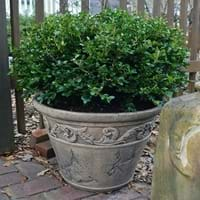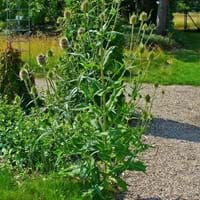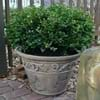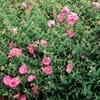Life Span
Perennial
Biennial
Type
Broadleaf Evergreen
Flowering Plants, Herbs
Origin
China, Korea
Europe, Asia
Types
Not available
Not Available
Habitat
Boggy areas, Swamps
Rocky areas, Semi desert, Subtropical climates
USDA Hardiness Zone
4-9
5-8
AHS Heat Zone
Not Available
8 - 5
Habit
Oval or Rounded
Upright/Erect
Flower Color
Yellow green
Purple
Flower Color Modifier
Bicolor
Bicolor
Fruit Color
Not Available
Non Fruiting Plant
Leaf Color in Spring
Green, Dark Green
Green
Leaf Color in Summer
Dark Green
Green
Leaf Color in Fall
Dark Green
Green
Leaf Color in Winter
Dark Green
Light Green
Plant Season
Spring, Summer, Fall, Winter
Summer, Fall, Winter
Sunlight
Full Sun, Partial Sun
Full Sun
Growth Rate
Slow
Very Fast
Type of Soil
Loam, Sand
Clay, Loam
The pH of Soil
Acidic, Neutral
Acidic, Neutral, Alkaline
Soil Drainage
Well drained
Average
Bloom Time
Late Spring
Summer, Late Summer
Tolerances
Not Available
Not Available
Where to Plant?
Container, Ground, Pot
Ground, Pot
How to Plant?
Cuttings, Seedlings
Seedlings, Stem Planting
Plant Maintenance
Medium
Medium
Watering Requirements
Keep ground moist, Keep the Soil well drained, Requires regular watering
Average Water Needs
In Summer
Lots of watering
Lots of watering
In Spring
Moderate
Moderate
In Winter
Average Water
Average Water
Soil pH
Acidic, Neutral
Acidic, Neutral, Alkaline
Soil Type
Loam, Sand
Clay, Loam
Soil Drainage Capacity
Well drained
Average
Sun Exposure
Full Sun, Partial Sun
Full Sun
Pruning
Prune back the growing tips, Prune to stimulate growth, Remove damaged leaves, Remove dead branches, Remove dead leaves
Remove damaged leaves, Remove dead branches, Remove dead leaves, Requires very little pruning
Fertilizers
10-10-10 diluted liquid fertilizer, Any balanced general purpose fertilizer
All-Purpose Liquid Fertilizer
Pests and Diseases
Leafminer, Mites, Nematodes, Psyllids
Pests and diseases free
Plant Tolerance
Drought
Drought
Flowers
Insignificant
Showy
Flower Petal Number
Single
Single
Foliage Texture
Fine
Coarse
Foliage Sheen
Glossy
Glossy
Attracts
Flying insects, Insects
Birds
Allergy
Itchiness, Skin irritation
Skin irritation
Aesthetic Uses
Bonsai, Decorating walls, Landscape Designing, Mass in beds, Mixed Border, Showy Purposes, Used for decorating walls, fences, gates, hedges, etc., Used for making hedges
Showy Purposes
Beauty Benefits
Not Available
Not Available
Environmental Uses
Air purification, Food for animals, Food for birds
Air purification
Medicinal Uses
Not Available
No Medicinal Use
Part of Plant Used
Not Available
Flowers
Other Uses
Used as Ornamental plant, Used for Landscaping
Dried heads are used in floristry, Used as Ornamental plant
Used As Indoor Plant
No
No
Used As Outdoor Plant
Yes
Yes
Garden Design
Container, Edging, Foundation, Hedges, Rock Garden, Wall
Wildflower
Botanical Name
Buxus microphylla
DIPSACUS fullonum
Common Name
Korean boxwood
Fuller's Teasel
In Hindi
Korean Boxwood
Fuller's Teasel
In German
Koreanisch Boxwood
Fullers Karde
In French
Boxwood coréenne
Cardère à foulon
In Spanish
Buxus microphylla
Cardo de Fuller
In Greek
Κορέας Πυξάρι
Νεράγκαθο του Fuller
In Portuguese
Boxwood coreana
Carda de Fuller
In Polish
Koreański Bukszpan
Fullera Oset
In Latin
Korean Boxwood
Teasel Fullonis
Phylum
Tracheophyta
Anthophyta
Class
Magnoliopsida
Magnoliopsida
Family
Buxaceae
Dipsacaceae
Clade
Angiosperms, Eudicots
Angiosperms, Asterids, Eudicots
Tribe
Not Available
Not Available
Subfamily
Not Available
Dipsacoideae
Properties of Korean Boxwood and Fuller's Teasel
Wondering what are the properties of Korean Boxwood and Fuller's Teasel? We provide you with everything About Korean Boxwood and Fuller's Teasel. Korean Boxwood doesn't have thorns and Fuller's Teasel doesn't have thorns. Also Korean Boxwood does not have fragrant flowers. Korean Boxwood has allergic reactions like Itchiness and Skin irritation and Fuller's Teasel has allergic reactions like Itchiness and Skin irritation. Compare all the properties and characteristics of these two plants. Find out which of these plant can be used as indoor plant. If you are interested to decorate your house and garden, find out aesthetic uses, compare them and select the plant which will beautify your surrounding. Along with beautification, try comparing medicinal and edible uses of Korean Boxwood and Fuller's Teasel and you can choose the plant having best and most benefits.
Season and Care of Korean Boxwood and Fuller's Teasel
Season and care of Korean Boxwood and Fuller's Teasel is important to know. While considering everything about Korean Boxwood and Fuller's Teasel Care, growing season is an essential factor. Korean Boxwood season is Spring, Summer, Fall and Winter and Fuller's Teasel season is Spring, Summer, Fall and Winter. The type of soil for Korean Boxwood is Loam, Sand and for Fuller's Teasel is Clay, Loam while the PH of soil for Korean Boxwood is Acidic, Neutral and for Fuller's Teasel is Acidic, Neutral, Alkaline.
Korean Boxwood and Fuller's Teasel Physical Information
Korean Boxwood and Fuller's Teasel physical information is very important for comparison. Korean Boxwood height is 120.00 cm and width 90.00 cm whereas Fuller's Teasel height is 150.00 cm and width 30.00 cm. The color specification of Korean Boxwood and Fuller's Teasel are as follows:
Korean Boxwood flower color: Yellow green
Korean Boxwood leaf color: Green and Dark Green
Fuller's Teasel flower color: Purple
- Fuller's Teasel leaf color: Green
Care of Korean Boxwood and Fuller's Teasel
Care of Korean Boxwood and Fuller's Teasel include pruning, fertilizers, watering etc. Korean Boxwood pruning is done Prune back the growing tips, Prune to stimulate growth, Remove damaged leaves, Remove dead branches and Remove dead leaves and Fuller's Teasel pruning is done Remove damaged leaves, Remove dead branches, Remove dead leaves and Requires very little pruning. In summer Korean Boxwood needs Lots of watering and in winter, it needs Average Water. Whereas, in summer Fuller's Teasel needs Lots of watering and in winter, it needs Average Water.





